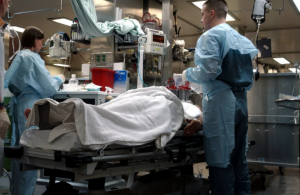Advanced Technologies That Can Change the Healthcare Industry

Technology is a significant part of healthcare, as it is the driving force behind all the advances that can change and improve countless lives. One of the best technology used in the healthcare industry is healthcare simulation. You can learn more about it at https://www.anaes.fr/jcms/pprd_2974158/en/promouvoir-la-simulation-en-sante-pour-la-gestion-des-risques. In this article, we will see the most advanced technologies used in the healthcare industry.

Today’s pace of innovation is ever-increasing, and most would agree that this technology is helping us practice topical and pharmacological treatments that allow us to use new tools, save lives, and gather information. In the following guide, we’ll highlight some of these complicated ways technology is changing healthcare and why we should embrace it when sharing information or assisting with high-risk operations.
Healthcare Simulation
Healthcare simulation is a method used to reinforce or enhance real-world experiences with guided exercises that evoke or interactively replicate crucial real-world features. Healthcare simulation uses many different tools, from immersive or near-replicated healthcare environments that contain virtually everything found in a real-world clinical setting to enhanced virtual healthcare environments.
Virtual Healthcare
 Virtual health care is also known as telehealth and telemedicine because it allows patients to share important information with their doctors and monitor their own health at home, for example, with a stethoscope. Many of the best stethoscopes can be easily purchased online. This type of health care also allows doctors to share their knowledge via video conferencing or mobile apps. Years ago this was unimaginable, but today you will have the ability to connect with a doctor in another part of the world and learn about their revolutionary treatments and medications.
Virtual health care is also known as telehealth and telemedicine because it allows patients to share important information with their doctors and monitor their own health at home, for example, with a stethoscope. Many of the best stethoscopes can be easily purchased online. This type of health care also allows doctors to share their knowledge via video conferencing or mobile apps. Years ago this was unimaginable, but today you will have the ability to connect with a doctor in another part of the world and learn about their revolutionary treatments and medications.
Artificial Intelligence
Artificial intelligence is not yet a high priority, and implementation can be slow, mostly due to cost (only 12% of wellness programs reported implementing AI for cancer care or plan to do so in 2018). According to the reports, many of the most common areas that AI impacts are: clinical decision support, individual health, disease management, readmissions, and medical/health cost program. It is emphasized that A.I. machines will most likely replace radiologists, but rather A.I. could improve the doctor-patient relationship by freeing up time that physicians essentially don’t have, allowing them to spend more time with victims.
Medical 3D Printing
3D printing is not new, as it has been used for a long time, but it has come a long way. Now that printing has faster prototypes that can offer custom prosthetics. What makes 3D printing amazing is that it can also recognize organ transplants and tissue attachments to produce realistic skin. 3D replicas and anatomical variations also allow doctors to scan data to diagnose ailments, clarify them, and plan surgical procedures. 3D printing still has a long way to go, but models are becoming more complex and realistic.
Robot Assistant for Surgery
Robot-assisted surgery is a type of surgical procedure performed by autonomous systems. It was developed primarily to help doctors perform minimally invasive procedures and improve the skills of surgeons. For example, laparoscopic surgery involves small incisions that can be achieved this way because it does not require blood transfusions.…
